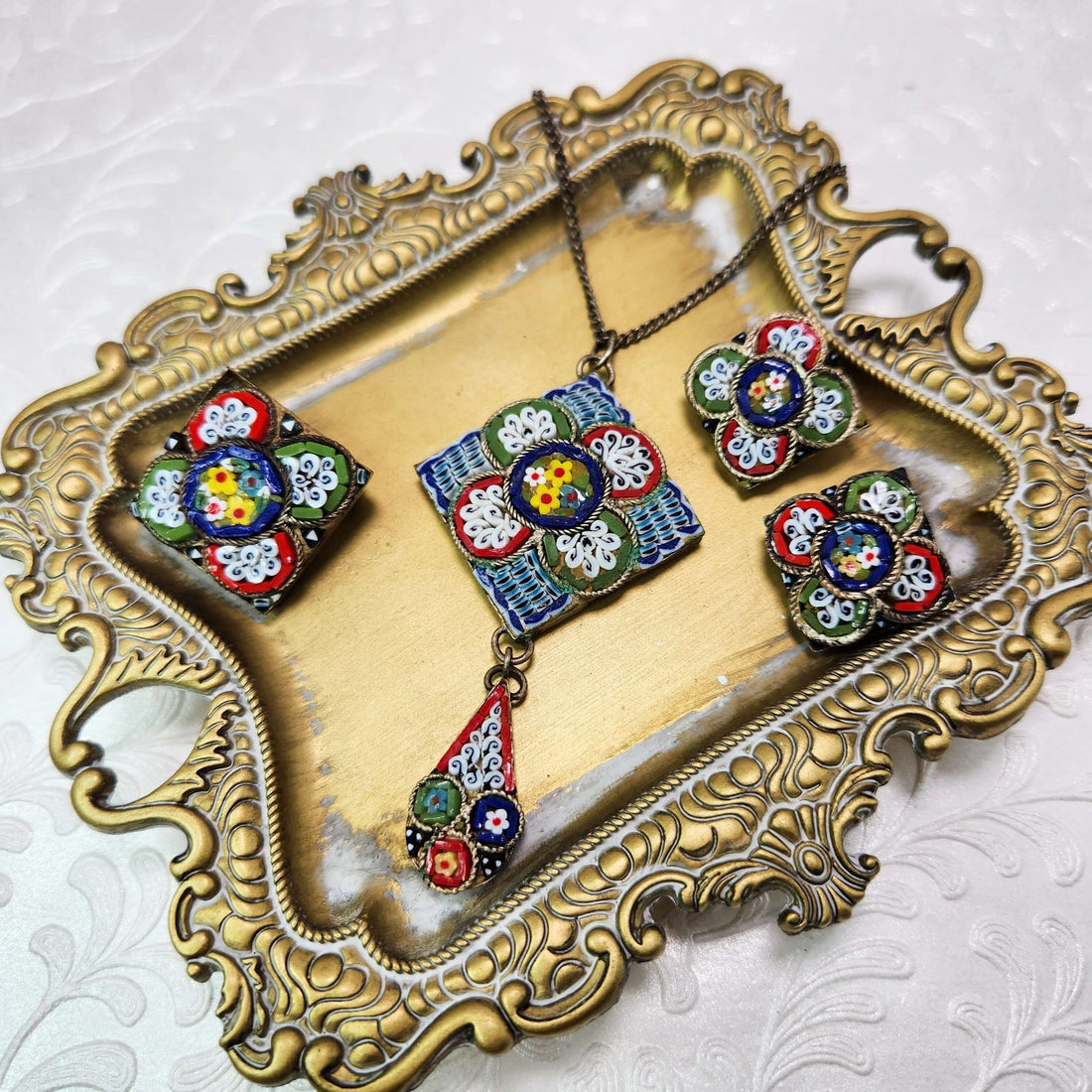
Exploring the Intricate Artistry: The History of Micro-Mosaic and Mosaic Jewelry
Share
Discover the intricate beauty of history, preserved in every tessera.
In the realm of antique and vintage jewelry, few styles captivate the eye and the imagination quite like micro-mosaic and mosaic jewelry. As a jewelry historian deeply immersed in the elegance of bygone eras, delving into the history of these exquisite pieces unveils a tapestry of artistry and cultural significance.

The "Dionysus Rondel" Mosaic. Ancient Roman City Zeugma, Turkey, circa 2nd-3rd century C.E. Image: Shutterstock
The roots of mosaics can be traced back to ancient civilizations, where skilled artisans meticulously arranged tiny fragments of colored glass, stone, or ceramic (tesserae) to create intricate patterns and scenes. This technique flourished in ancient Greece and Rome, adorning floors, walls, and even furniture with elaborate mosaics that spoke of opulence and artistic prowess.
Fast-forward to the 18th century in Rome, where a revival of interest in ancient art sparked a Renaissance in the art of mosaic artisanship. It was here that the art of micro-mosaic jewelry took root and blossomed into a favored decorative art form. Skilled Italian artisans, known as "micromosaicisti," adapted ancient techniques to create miniature masterpieces for adornment.

Micro-mosaic ring, circa 1940s. Image: The Gemmary
Micro-mosaic jewelry distinguished itself through its meticulous technique. Artisans painstakingly cut minuscule tesserae from colored glass rods, arranging them with precision onto a base to form intricate designs. The resulting pieces often depicted floral motifs, picturesque landscapes, or classical scenes with astonishing detail and vibrancy.

Murano mosaic jewelry station. Image: Shutterstock
Each tessera, no larger than a grain of sand, was carefully placed and fused using heat to ensure durability and brilliance. This method not only required exceptional skill but also an artistic sensibility to harmonize colors and shapes into coherent compositions that dazzled the eye.
By the 19th century, micro-mosaic jewelry had captured the hearts of European nobility and affluent travelers on the Grand Tour. These miniature treasures became sought-after souvenirs, offering a tangible connection to Rome's artistic heritage and an elegant testament to one's cultured sophistication.

1910s micro-mosaic necklace. Image: The Gemmary
The jewelry's popularity spread across Europe and beyond, influencing fashion trends and inspiring imitations. In addition to traditional brooches and pendants, micro-mosaic-adorned items such as hairpins, earrings, and even small decorative boxes, each piece is a testament to the enduring allure of this intricate art form.
Today, micro-mosaic and mosaic jewelry continue to enchant collectors and connoisseurs alike. Their historical significance, coupled with the exceptional skill required to create them, ensures their place as cherished heirlooms and valuable artifacts of cultural heritage.

Green floral mosaic brooch, c. 1940s. Image: The Gemmary
Whether displayed in museum collections or treasured in private collections, these pieces serve as a testament to human ingenuity and the timeless appeal of art expressed through jewelry. Their beauty not only reflects the skill of their creators but also invites us to appreciate the artistry and history they embody.
Micro-mosaic and mosaic jewelry stand as enduring symbols of artistic excellence and cultural heritage. From ancient origins to modern appreciation, their journey through history continues to inspire fascination and admiration.

1940s micro-mosaic necklace. Image: The Gemmary
As a curator of antique and vintage jewelry, I invite you to explore our collection, where each piece tells a story of innovation, elegance, and the timeless allure of micro-mosaic and mosaic jewelry.
